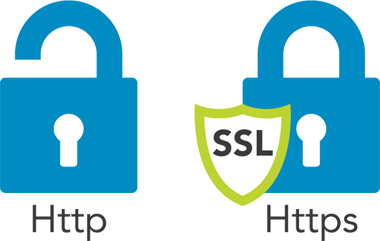
6 Steps to Get an SSL Certificate for Your Website
You have to receive an SSL certificate even if you don’t transmit or receive sensitive data. We offer a detailed guide on how to get SSL for your website.
1. Select a certification authority
We have selected the best certification centers for you:
- Sectigo (formerly Komodo) has become a leader in the commercial CA space. This center has successfully developed over the past few years due to its affordable price categories. You should be prepared for the verification to take some time, but such Sectigo certificates are very popular and prestigious.
- SSL For Free has proven itself to be excellent even as a non-commercial certification center working in all major browsers. Like other centers, this one has certifications with free SSL. The domain owner will have to renew such a certificate once every 3 months.
- DigiCert is a contemporary certificate that represents a complete solution for encryption and protection against malware for business. Having received such a certificate, you would receive access to additional protection of user data and important site infrastructure, dynamic site printing, and quick Business or Extended Validation. If you’re still looking for how to get an SSL certificate for your website, then DigiCert is the right choice.
There are also other centers like Thawte, Let’s Encrypt, or GoGetSSL. Choose the most suitable option for you from the advantages and pricing policy.
2. Check your site data with ICANN Lookup
Make sure that your information matches the records in ICANN searches. Check your nameserver, your registrar data, and your authoritative servers. The instrument applies the Registration Data Access Protocol that was created by the IETF as a replacement for the WHOIS protocol (port 43).
3. Generate the CSR
Many domain owners ask how to make your site SSL secure and here the answer is not only in obtaining a reliable certificate. Do not forget about the CSR. It is a specific file that is mandatory on your server. Create it before you send a request. The certification authority will check the CSR file you created, extracting important information from it.
If you do not know how to generate a CSR more accurately, it is better to contact the technical support of your hosting provider. This will be the most reliable option to create the correct file.
4. Submit the CSR to the CA
If you were looking for how to get SSL on your website and have already found a suitable center, then send an application there. When it is completed, the center will ask you to send it the CSR file that you created before.
5. Install the certificate
You will get access to your certificate via email. But if you have difficulties with how to install SSL on my website, it is better to upload it to the user account. The account is created when purchasing the certificate.
6. Testing and Maintenance
Free certificates are active for 3 months, paid ones – 12 months. Check the details of your certificate and do not miss its expiration date. Set up an email newsletter to remind you about it.
Conclusion
When creating a website, it is important to choose a reliable hosting and buy a VPS server. Now it will be easier for you to understand how to use SSL on my website, do it only in trusted centers. Obtaining such a certificate will give you many advantages, including increasing user confidence and the authority of your site.



